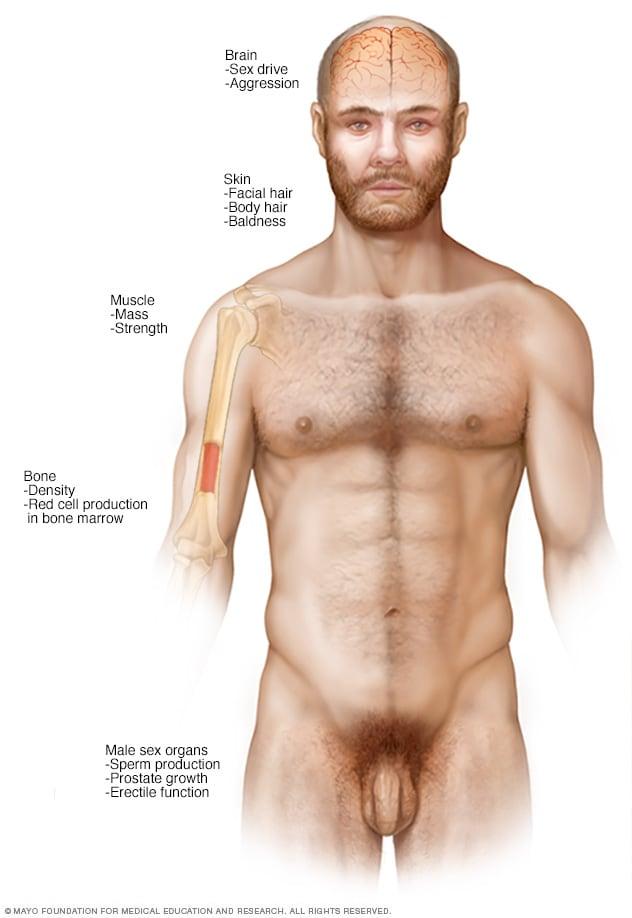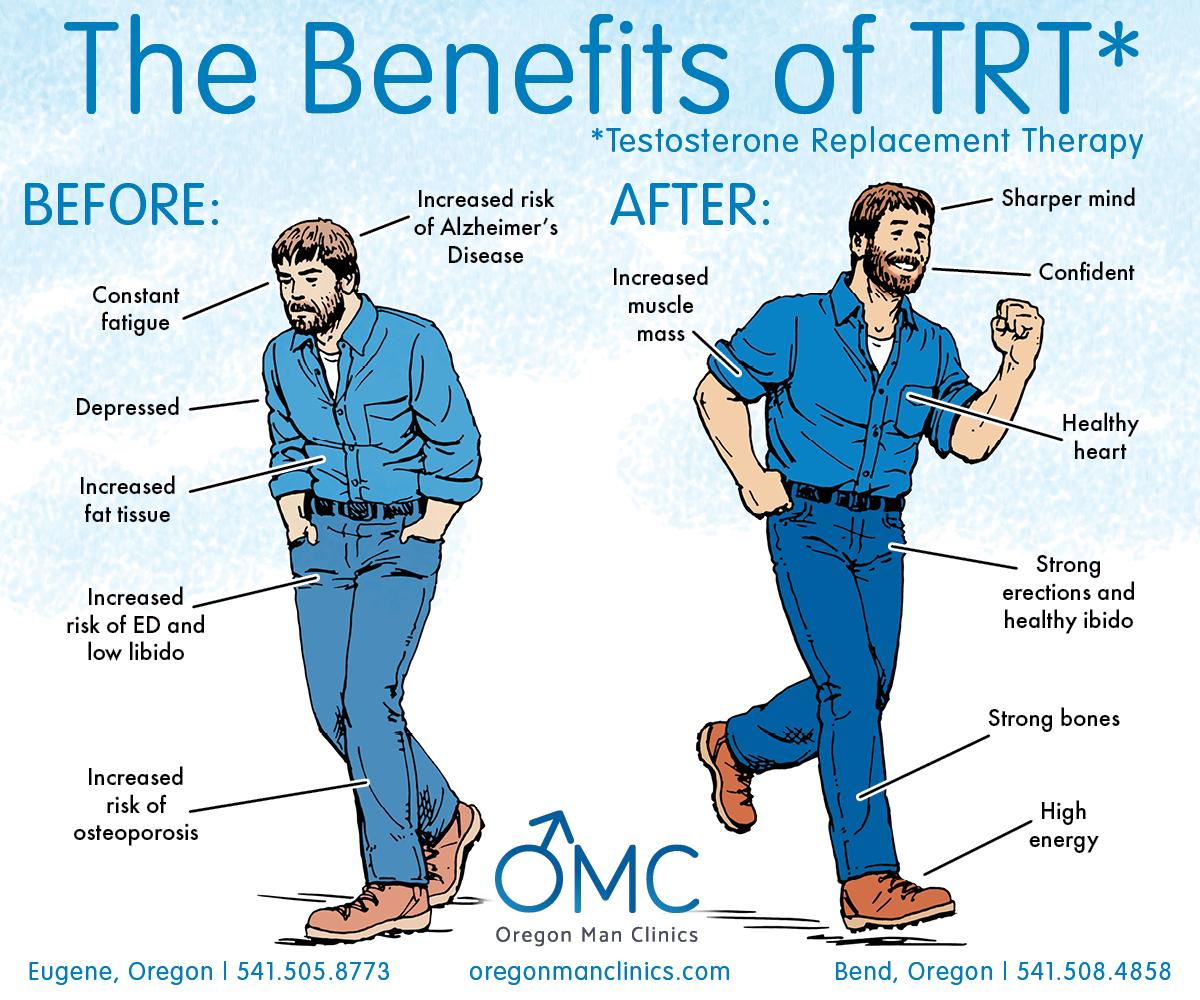Unlocking Endurance: The Role of Testosterone Therapy in Athletic Performance
In the realm of athleticism, the pursuit of endurance often evokes images of intense training sessions, disciplined diets, and an unwavering spirit. Yet, beneath the surface of physical exertion, the complex interplay of hormones plays a pivotal role in shaping an athlete’s capacity to endure. Among these hormones, testosterone—a vital player in muscle growth, energy levels, and overall well-being—has garnered increasing attention for its potential impact on endurance performance. As athletes seek new avenues to optimize their training and improve their results, testosterone therapy emerges as a topic of both fascination and controversy. This article delves into the science behind testosterone therapy, exploring its benefits, risks, and the evolving landscape of endurance sports in an age where hormonal enhancement is becoming more mainstream. Whether you’re a seasoned competitor or a curious newcomer, join us as we navigate the intricate relationship between testosterone and endurance, shedding light on the challenges and possibilities that lie ahead for athletes in pursuit of their limits.
Understanding Testosterone and Its Role in Endurance Performance
Testosterone, a vital hormone found in both men and women, plays a crucial role in various physiological processes that can significantly impact endurance performance. It facilitates muscle growth, enhances red blood cell production, and aids in the efficient use of oxygen. This means that athletes with higher testosterone levels often have an advantage when it comes to stamina and recovery. Some of the key benefits of testosterone in the context of endurance include:
- Increased Muscle Mass: Higher testosterone levels can lead to improved muscle hypertrophy, which is essential for endurance athletes looking to build strength without sacrificing agility.
- Enhanced Recovery: Testosterone aids in quicker recovery post-exercise, allowing athletes to train harder and more frequently.
- Improved Oxygen Utilization: Testosterone boosts the production of red blood cells, enhancing oxygen delivery to muscles during prolonged activity.
While the benefits are clear, the relationship between testosterone and endurance performance is complex. Factors such as age, genetics, and overall health can influence testosterone levels, leading to varying effects on performance. It’s essential for athletes to consult healthcare professionals before considering testosterone therapy, as improper use can lead to adverse effects and imbalance. The most common effects observed with testosterone therapy in endurance sports include:
| Clinical Effect | Potential Impact on Performance |
|---|---|
| Increased Stamina | Allows for extended training sessions without fatigue |
| Enhanced Red Blood Cell Count | Improved oxygen transport enhances overall endurance |
| Reduced Recovery Time | Faster healing results in more frequent training opportunities |

Evaluating the Benefits of Testosterone Therapy for Athletes
For athletes, testosterone therapy can be a compelling strategy to enhance performance and recover more effectively. This therapy, often used to combat low testosterone levels, may provide a range of benefits, including:
- Increased Muscle Mass: Testosterone plays a crucial role in muscle protein synthesis, allowing for enhanced strength and endurance.
- Improved Recovery Times: Athletes may experience quicker recovery after intense workouts, reducing the risk of injury and fatigue.
- Enhanced Mood and Motivation: Optimal hormone levels can help maintain focus and mental clarity, which is essential for training and competition.
Additionally, understanding the risks and appropriate use of testosterone therapy is vital for athletes considering this option. A balanced approach can ensure that the benefits outweigh potential downsides, making it important to evaluate:
| Benefits | Considerations |
|---|---|
| Boost in Strength | Risk of Hormonal Imbalance |
| Enhanced Endurance | Potential Side Effects |
| Better Recovery | Need for Medical Supervision |

Potential Risks and Side Effects of Hormonal Interventions
While testosterone therapy may enhance endurance and athletic performance, it’s essential to be aware of the potential risks and side effects associated with its use. Common side effects can range from mild to severe and might include:
- Hormonal Imbalance: Administration of external testosterone can disrupt the body’s natural hormonal balance, leading to a variety of physiological issues.
- Cardiovascular Problems: Increased testosterone levels may heighten the risk of heart-related issues, such as hypertension and cholesterol imbalances.
- Psychological Effects: Users might experience mood swings, irritability, or even aggressive behavior.
- Reproductive Health Issues: Testosterone therapy can lead to decreased sperm production and potential fertility challenges.
Moreover, long-term use of testosterone therapy carries additional risks. Individuals may experience:
- Acne and Skin Issues: Increased oil production can exacerbate acne or other skin conditions.
- Liver Damage: Certain forms of testosterone can pose risks to liver health if used over extended periods.
- Sleep Apnea: Elevated testosterone levels may contribute to sleep disorders, including sleep apnea.
| Potential Side Effects | Severity |
|---|---|
| Hormonal Imbalance | Mild to Moderate |
| Cardiovascular Problems | Severe |
| Psychological Effects | Mild |
| Reproductive Health Issues | Severe |

Guidelines for Responsible Use of Testosterone Therapy
Engaging in testosterone therapy to enhance endurance is a consideration that requires careful thought and responsibility. Adhering to best practices ensures not only effectiveness but also safety. When approaching testosterone therapy, ensure that you:
- Consult a Healthcare Professional: Always seek guidance from a qualified expert who can provide personalized advice and monitor your health.
- Follow Prescribed Dosages: Stick to the dosage recommended by your healthcare provider. Avoid self-medicating or adjusting doses without professional input.
- Regular Monitoring: Schedule consistent check-ups to assess hormone levels and overall health, allowing for adjustments based on need.
- Implement Lifestyle Changes: Combine therapy with a balanced diet, regular exercise, and adequate sleep to amplify benefits.
Understanding the potential side effects and addressing them proactively is essential in ensuring a positive experience. Be aware that:
| Potential Side Effects | Management Strategies |
|---|---|
| Increased Aggression | Practice stress-relief techniques like meditation. |
| Sleep Disturbances | Maintain a consistent sleep schedule and limit screens before bedtime. |
| Risk of Cardiovascular Issues | Regularly monitor blood pressure and cholesterol levels. |
Balancing the benefits of testosterone therapy with awareness of its impacts will create a sustainable approach to enhancing endurance.
Integrating Testosterone Therapy with Training Regimens
Combining testosterone therapy with a well-structured training regimen can create synergies that amplify endurance performance. Athletes undergoing testosterone replacement may experience enhanced muscle mass, improved recovery times, and increased energy levels. These physiological changes can help extend training periods and elevate overall stamina. However, it is crucial to tailor the approach to individual needs, taking into account goals, fitness levels, and the specific characteristics of the training program. Here are some key considerations:
- Individual Assessment: Regular evaluations to monitor hormone levels and adjust therapy accordingly.
- Customized Program Design: Align training intensity and volume with therapy benefits for optimal results.
- Nutrition Focus: Complement hormonal support with a diet rich in essential nutrients to fuel energy demands.
In order to maximize the benefits of combining testosterone therapy and training, athletes can employ specific strategies that align their workout routines with their hormonal status. Below is a simple framework that can guide athletes in structuring their training sessions:
| Training Element | Focus | Recommended Frequency |
|---|---|---|
| Strength Training | Build muscle mass | 2-3 times a week |
| Cardiovascular Workouts | Enhance stamina | 3-4 times a week |
| Recovery Sessions | Facilitate muscle recovery | As needed |
Monitoring and Adjusting Testosterone Levels for Optimal Outcomes
Monitoring testosterone levels is essential for ensuring that the therapy remains effective and safe. Regular assessments allow healthcare providers to detect any fluctuations that may necessitate adjustments to the treatment plan. Key methods for monitoring include:
- Blood Tests: Conducted to determine total and free testosterone levels, typically measured in the morning when levels are at their peak.
- Symptom Tracking: Keeping a diary of physical, emotional, and cognitive changes can provide insights into how therapy is affecting overall well-being.
- Provider Consultations: Regular check-ins with a healthcare professional ensure that any side effects or concerns are addressed promptly.
Once discrepancies in testosterone levels are identified, adjustments to therapy can be made to optimize results. These adjustments may involve:
- Dosage Changes: Increasing or decreasing the testosterone dosage based on test results and symptom severity.
- Delivery Method Alterations: Switching from injections to gels, patches, or pellets, depending on individual preference and response.
- Lifestyle Modifications: Incorporating changes in diet, exercise, and stress management techniques to further enhance testosterone production naturally.
The Future of Endurance Sports: Trends in Hormonal Therapies
In recent years, the intersection of hormonal therapies and endurance sports has gained traction among athletes seeking both improved performance and recovery. Testosterone therapy, for instance, has shown potential in enhancing endurance by increasing muscle mass and reducing fat, thereby promoting better efficiency during prolonged physical activities. Athletes are increasingly considering this therapy not just for its performance-enhancing capabilities but also for the added benefits of improved mood and motivation, which can be crucial for rigorous training regimens.
As we explore the future of endurance sports, a few notable trends emerge within the realm of hormonal therapies:
- Personalized medicine: Tailoring testosterone levels to individual athletes’ needs for optimized benefits.
- Integration with technology: Utilizing wearables and apps to monitor hormonal levels in real-time.
- Holistic approaches: Combining testosterone therapy with nutrition and lifestyle changes to maximize endurance.
As research continues to evolve, the long-term implications of such therapies will stir conversation in both professional and amateur circles alike, igniting fierce debates on ethics, safety, and fair competition. Understanding how hormonal balance affects athletic performance may hold the key to the next generation of training methodologies.
Q&A
Q&A: Understanding Testosterone Therapy for Endurance
Q1: What is testosterone therapy, and how does it relate to endurance?
A1: Testosterone therapy involves the administration of testosterone to increase its levels in the body, particularly in individuals with testosterone deficiency. It plays a critical role in muscle mass, strength, and overall physical performance. For those looking to enhance their endurance, elevated testosterone levels may facilitate improvements in stamina, recovery, and muscular endurance, thereby potentially enhancing athletic performance.
Q2: Who might benefit from testosterone therapy specifically for endurance activities?
A2: Individuals diagnosed with testosterone deficiency, often characterized by symptoms like fatigue, decreased muscle mass, and lowered athletic performance, may benefit from testosterone therapy. Additionally, older athletes may seek therapy to combat age-related declines in testosterone levels, which can impact endurance capabilities. However, it’s essential to assess each case individually, as the benefit highly depends on one’s health status and fitness goals.
Q3: What are the potential benefits of testosterone therapy for endurance athletes?
A3: For endurance athletes, testosterone therapy may provide several benefits, including improved muscle recovery, enhanced red blood cell production (which increases oxygen transport in the body), and an overall increase in energy levels. This can lead to better training responses, allowing athletes to train harder and recover faster, ultimately improving performance during endurance events.
Q4: Are there risks or side effects associated with testosterone therapy?
A4: Yes, testosterone therapy is not without potential risks and side effects. Some individuals may experience acne, fluid retention, mood swings, or an increased risk of sleep apnea. Long-term use may elevate risks of cardiovascular issues, prostate problems, and hormonal imbalances. As with any medical therapy, it’s crucial to consult with a healthcare provider to understand these risks and to monitor health throughout the treatment.
Q5: How is testosterone therapy administered?
A5: Testosterone therapy can be administered in several ways, including injections, transdermal patches, gels, or pellets implanted under the skin. The method of administration can affect how the hormone is absorbed and utilized by the body, so it’s essential for individuals to work closely with their healthcare provider to determine the most appropriate delivery method based on their lifestyle and medical needs.
Q6: Is testosterone therapy legal for competitive athletes?
A6: Testosterone therapy is subject to strict regulations in the world of competitive sports. Most sporting organizations, including the World Anti-Doping Agency (WADA), prohibit the use of exogenous testosterone. Athletes must be cautious and ensure they are compliant with the rules of their sport, as unauthorized use can lead to disqualification and tarnish reputations.
Q7: What should individuals consider before starting testosterone therapy for endurance?
A7: Before embarking on testosterone therapy, individuals should thoroughly evaluate their current health, discuss their symptoms with a qualified healthcare provider, and consider alternative approaches to enhancing endurance, such as training modifications and nutritional support. Understanding the implications of therapy, including potential risks, benefits, and legal implications, is essential for making an informed decision.
Q8: is testosterone therapy a good choice for enhancing endurance?
A8: While testosterone therapy may offer benefits for some individuals, including improved endurance and recovery, it’s not a one-size-fits-all solution. It requires careful consideration, professional guidance, and ongoing health monitoring. For many athletes, exploring other training and lifestyle interventions can also yield significant benefits without the associated risks of hormone therapy. As always, individual needs and circumstances should guide the decision-making process.
Key Takeaways
As we reach the final stretch of our exploration into testosterone therapy for endurance, it’s clear that the conversation around performance enhancement is as multifaceted as the athletes it seeks to support. While the potential benefits of testosterone therapy are compelling—ranging from increased stamina to improved recovery—it is equally crucial to tread carefully through the landscape of medical guidance, ethical considerations, and individual health needs.
Athletes, trainers, and medical professionals alike must weigh the evidence and listen to the body’s own signals. The journey toward enhancing endurance through hormonal therapy should be one of informed choices, always prioritizing overall well-being.
In closing, whether you are an elite competitor or an enthusiastic weekend warrior, understanding the implications of testosterone therapy empowers you to make choices that not only elevate performance but respect the intricate balance of health. As the finish line approaches, remember: the pursuit of endurance is not solely about pushing limits but also about nurturing the body that carries you forward.










